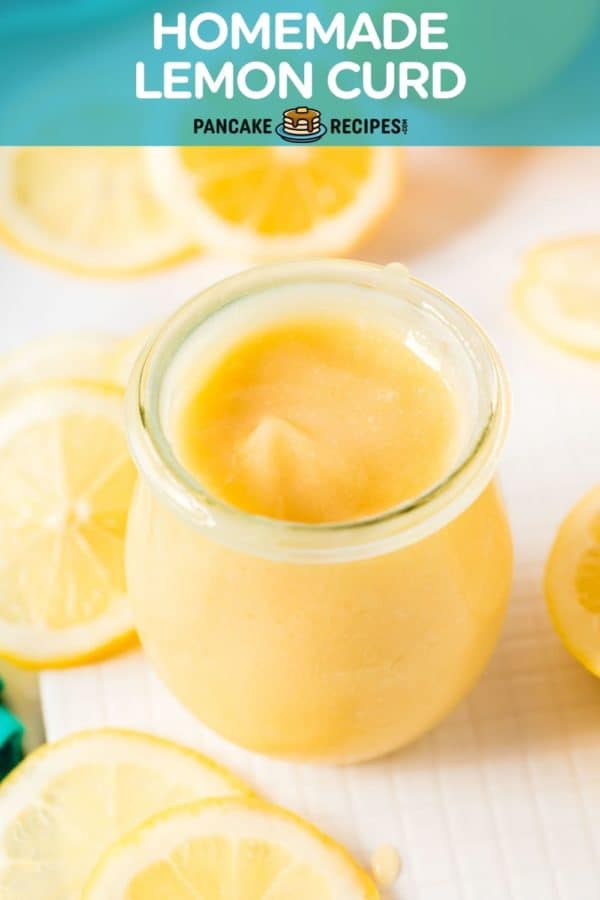Lemon Curd Recipe – easy homemade lemon curd
This lemon curd recipe is a quick and easy way to add a rich and creamy explosion of sweet lemon flavor to all your desserts! Use it as an irresistible topping, filling, or spread!
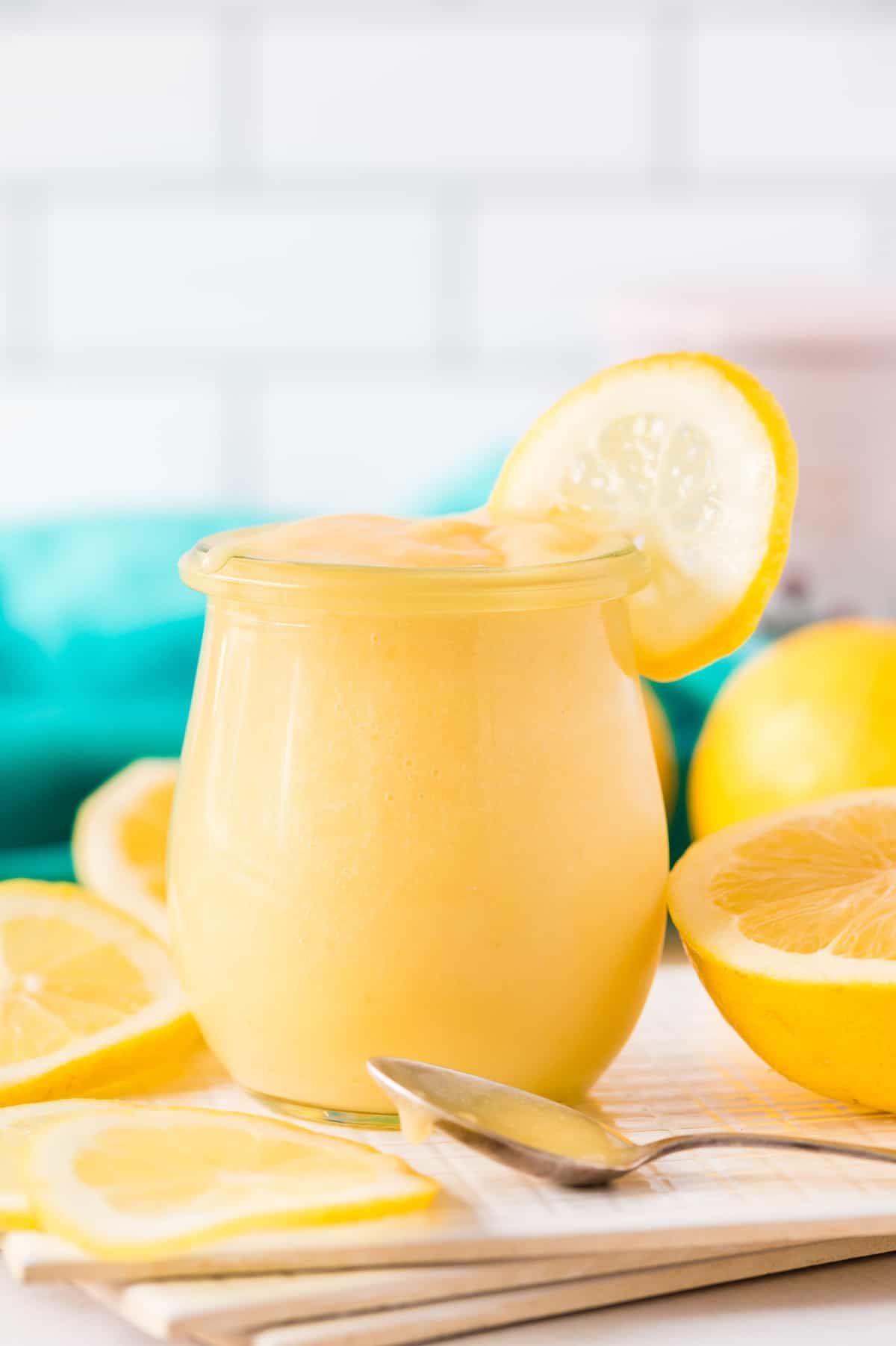
Making homemade lemon curd is way too easy to ever buy store-bought curd again. It’s fresh, it’s vibrant, and loaded with real lemon flavor that just can’t be beaten. It is so good! In fact, there’s a good chance you’ll be eating it by the spoonful!
About this recipe
This lemon curd recipe makes the most flavorful, luscious cream in minutes, using fresh lemons, butter, eggs, and sugar. That’s it!
It is a deliciously simple way to brighten up all your desserts whether for cake layers, using it as a filling for crepes and donut holes, as a spread across tarts and cookies, and of course a dollop on top of your favorite breakfast pancakes! It’s unreal in these blueberry rolls and great piled on top of our lemon Dutch baby!
The bright yellow color is a standout addition to any dessert table. It’s great for wedding showers, baby showers, and fancy brunch dates with the girls. Make it ahead and keep it on hand, because you’ll never run out of ways to use it!
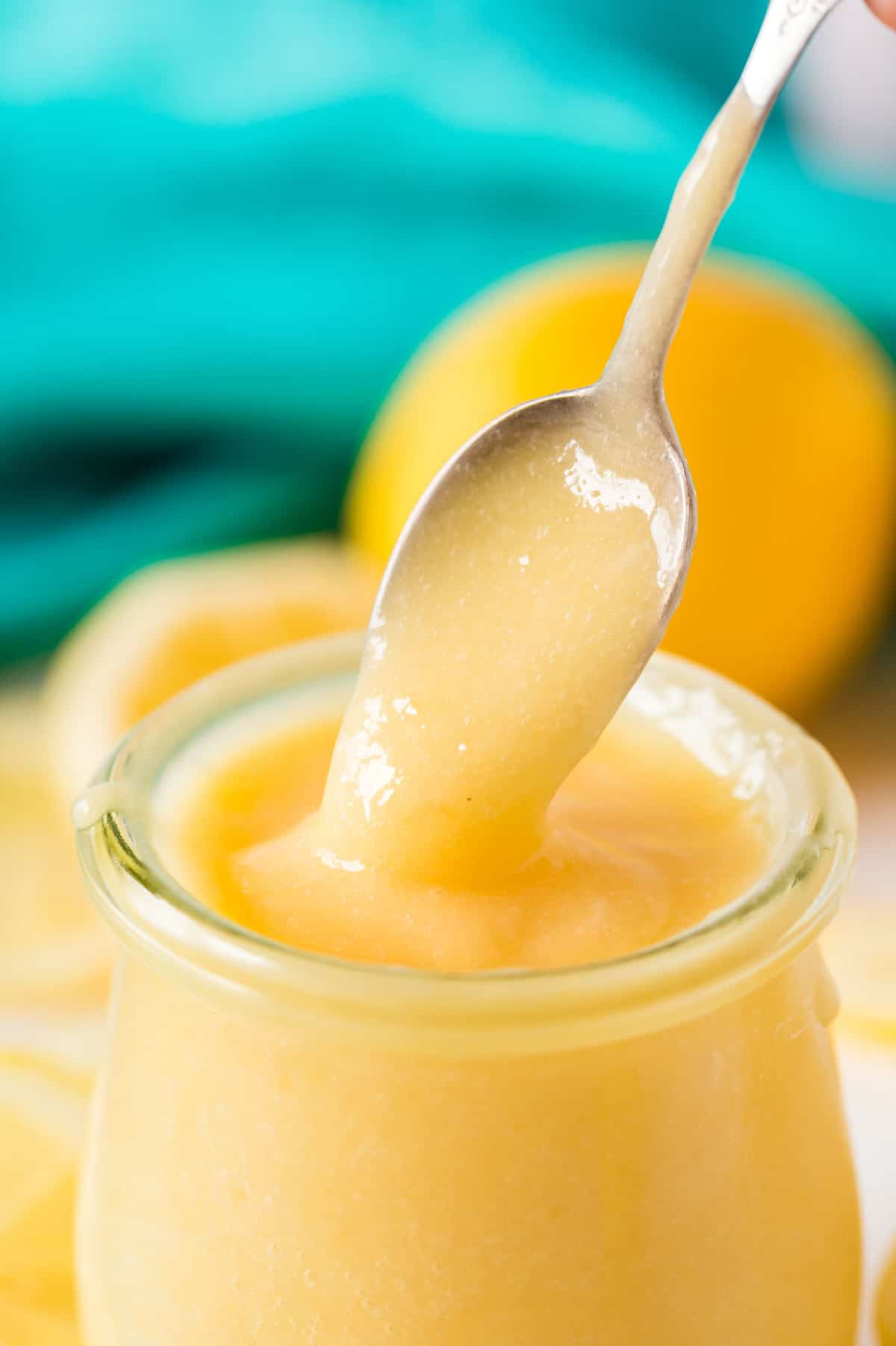
What you need
- Unsalted butter – Melted butter gives a smooth silky texture to the curd.
- Eggs – They should be at room temperature.
- Lemon juice and zest – Use fresh lemons. Do not use lemon juice from a bottle!
- Granulated sugar – Gives it the sweetness that balances out the tartness of lemons.
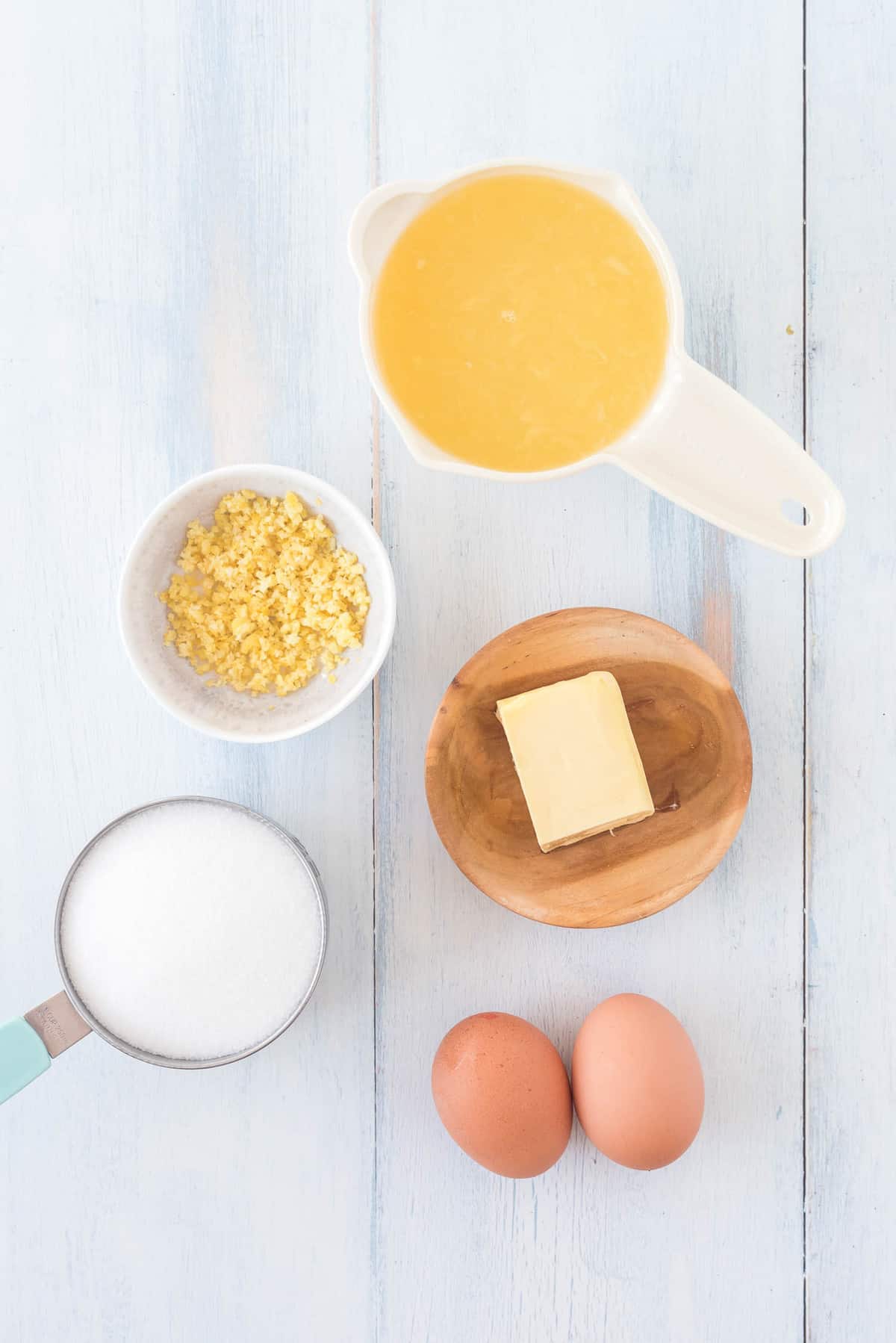
How to make it
This easy recipe comes together in minutes which makes it great for beginners!
In a small pot on the stovetop, melt the butter.
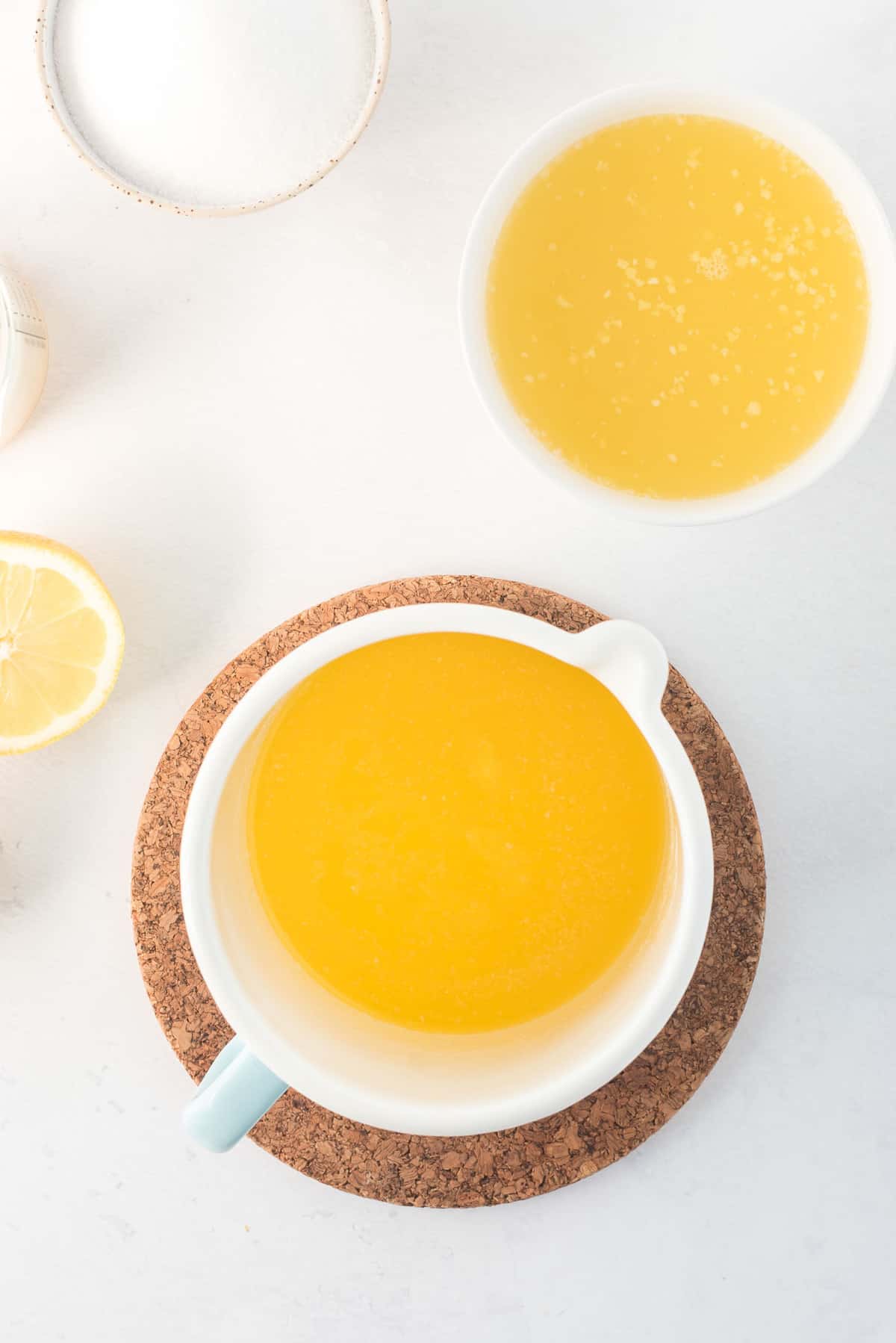
In a mixing bowl, beat the eggs until bright and foamy.
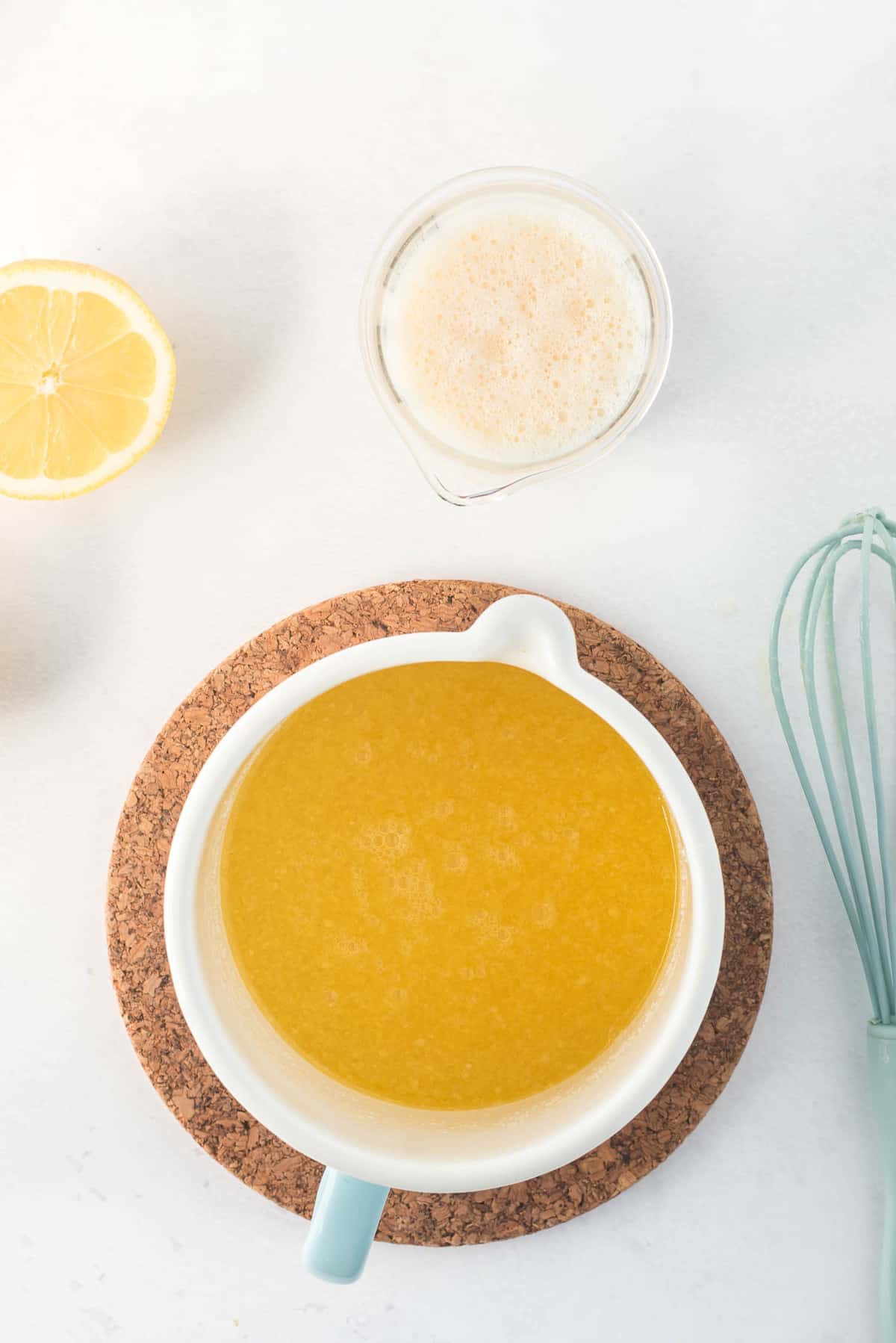
Add the lemon juice, sugar, and zest to the butter, then stir in the beaten eggs.
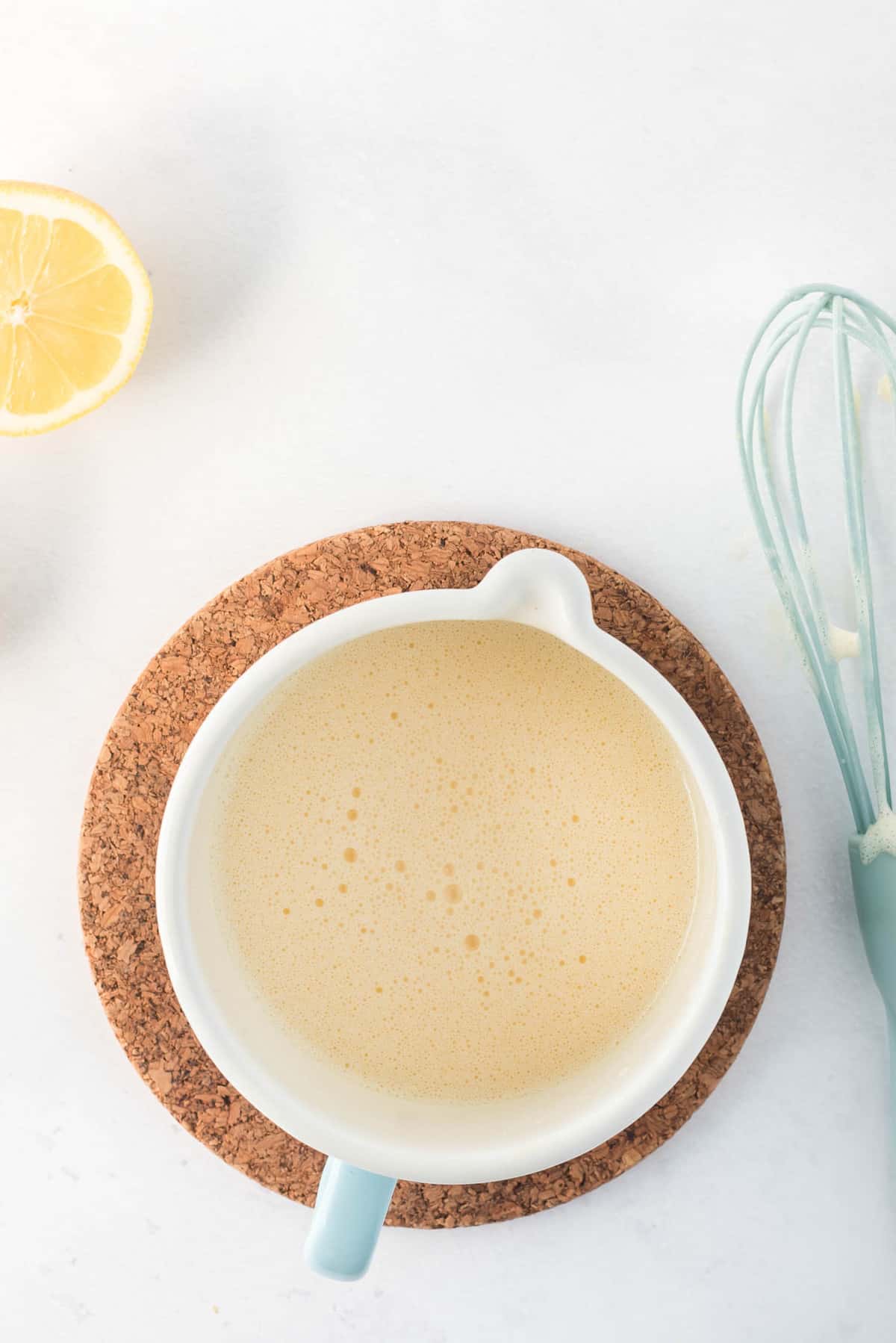
Gently heat the mixture over medium heat while constantly stirring. Do not bring to a boil.
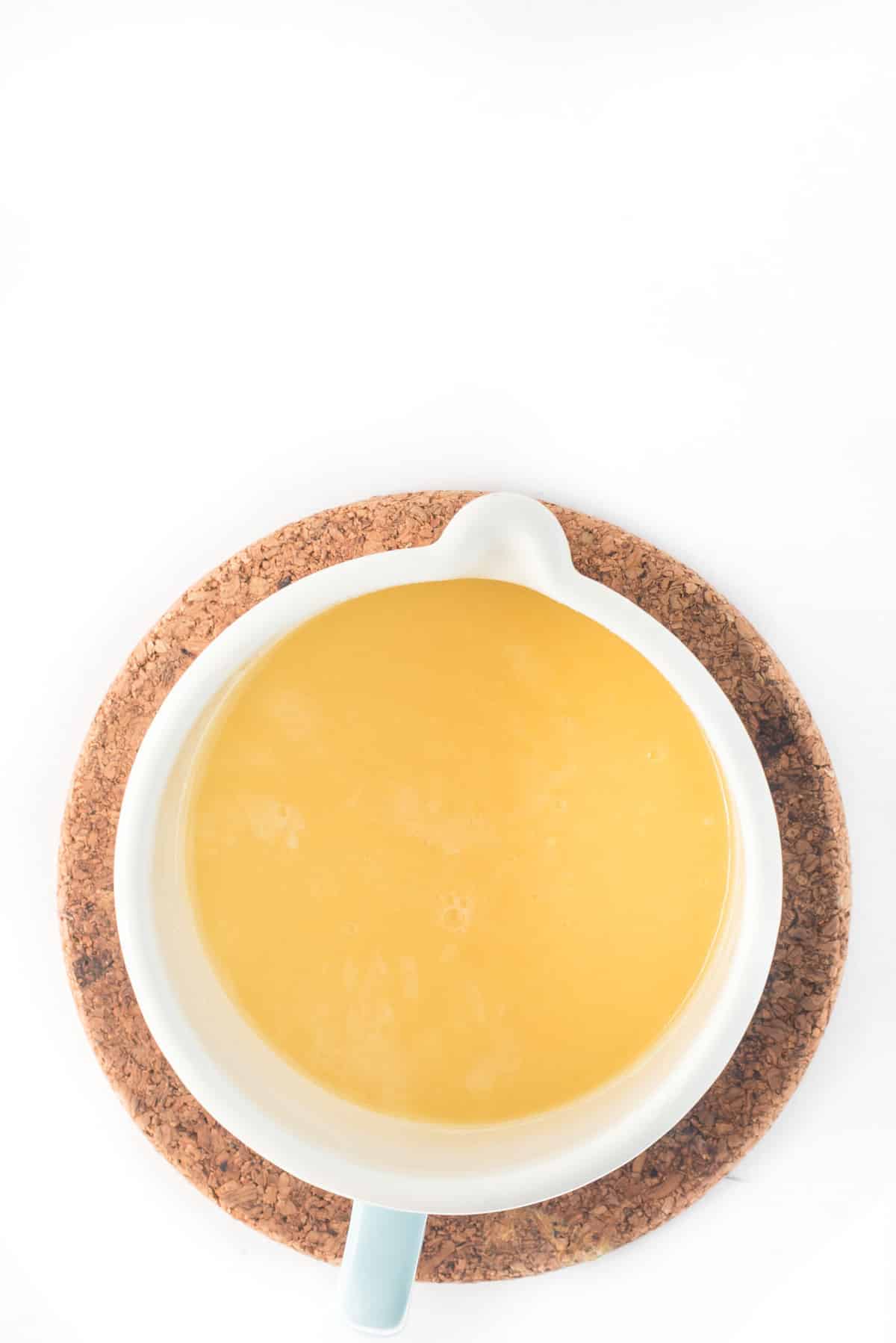
The curd will start to thicken in about 10 minutes, at which point lower the heat to a simmer until it has the consistency of a thick sauce. Remove from heat and use as desired. The sauce will continue to thicken as it cools.
TIP! For a flavor variation, you can make the curd with limes, oranges, or even grapefruits instead of lemons.
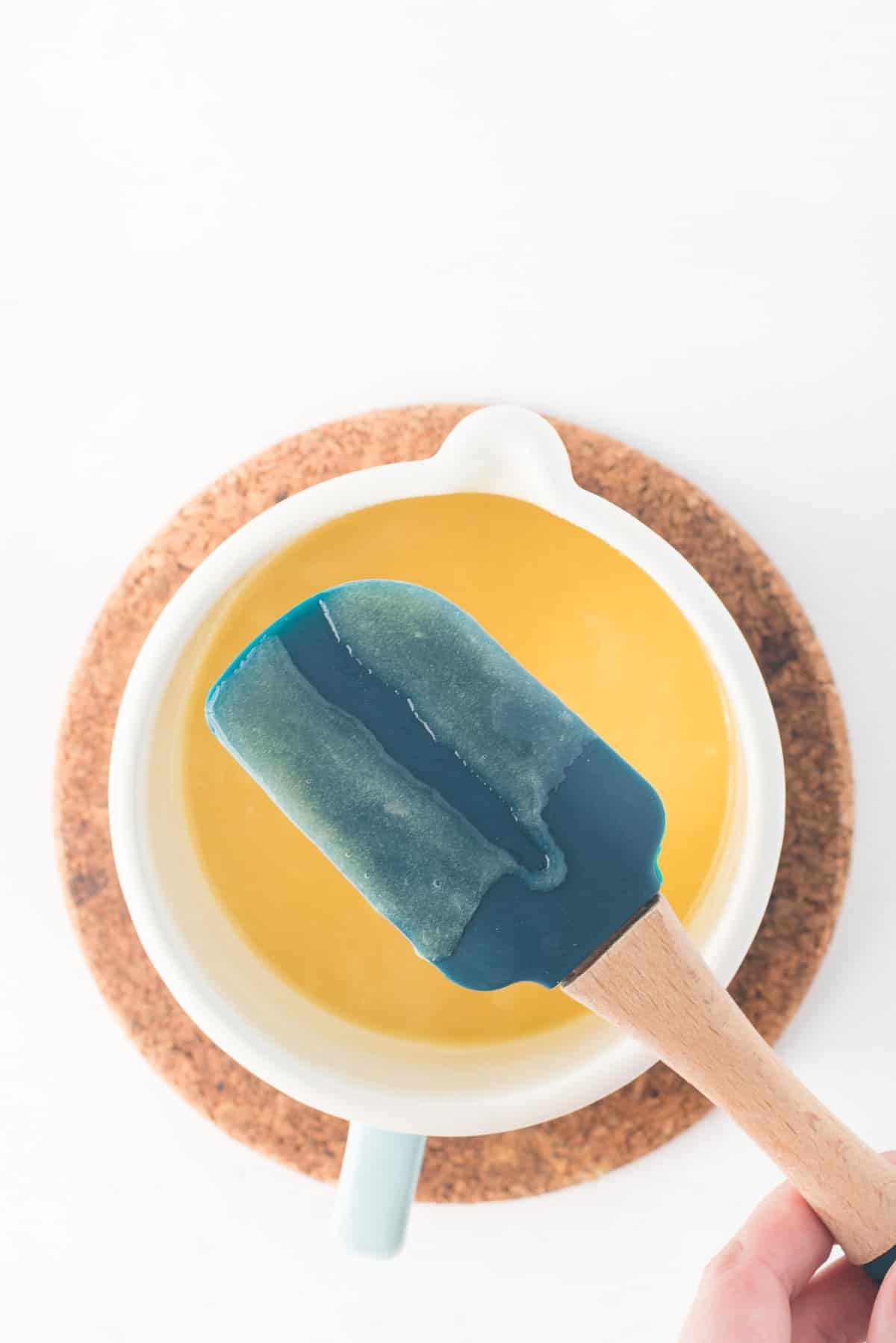
FAQs
Lemon curd is so versatile that it’s a welcome addition to anything from sweet breakfast treats to desserts. It’s a great topping or filling for cakes, donuts, cookies, scones, and pancakes! Enjoy it in a yogurt parfait or with a scoop of ice cream. Add a little lemon whipped cream to top it all off!
Once you’ve poured your lemon curd into clean jars for storage, it will keep in the fridge for up to 1 week.
That’s usually a sign you didn’t leave it on the heat long enough. Making lemon curd is ridiculously easy, but you do need to be continuously stirring for a good 10 minutes. A good way to test whether it’s thick enough is to use a spoon, dip it in the curd and run your finger down the back of the spoon (see above photo). If it separates into two distinct parts, it’s ready!
I dare you not to! Of course, you can, it’s delicious! But don’t stop there, spread it on lemon blueberry pancakes, lemon ricotta pancakes, and lemon poppy seed pancakes for something a little extra special!
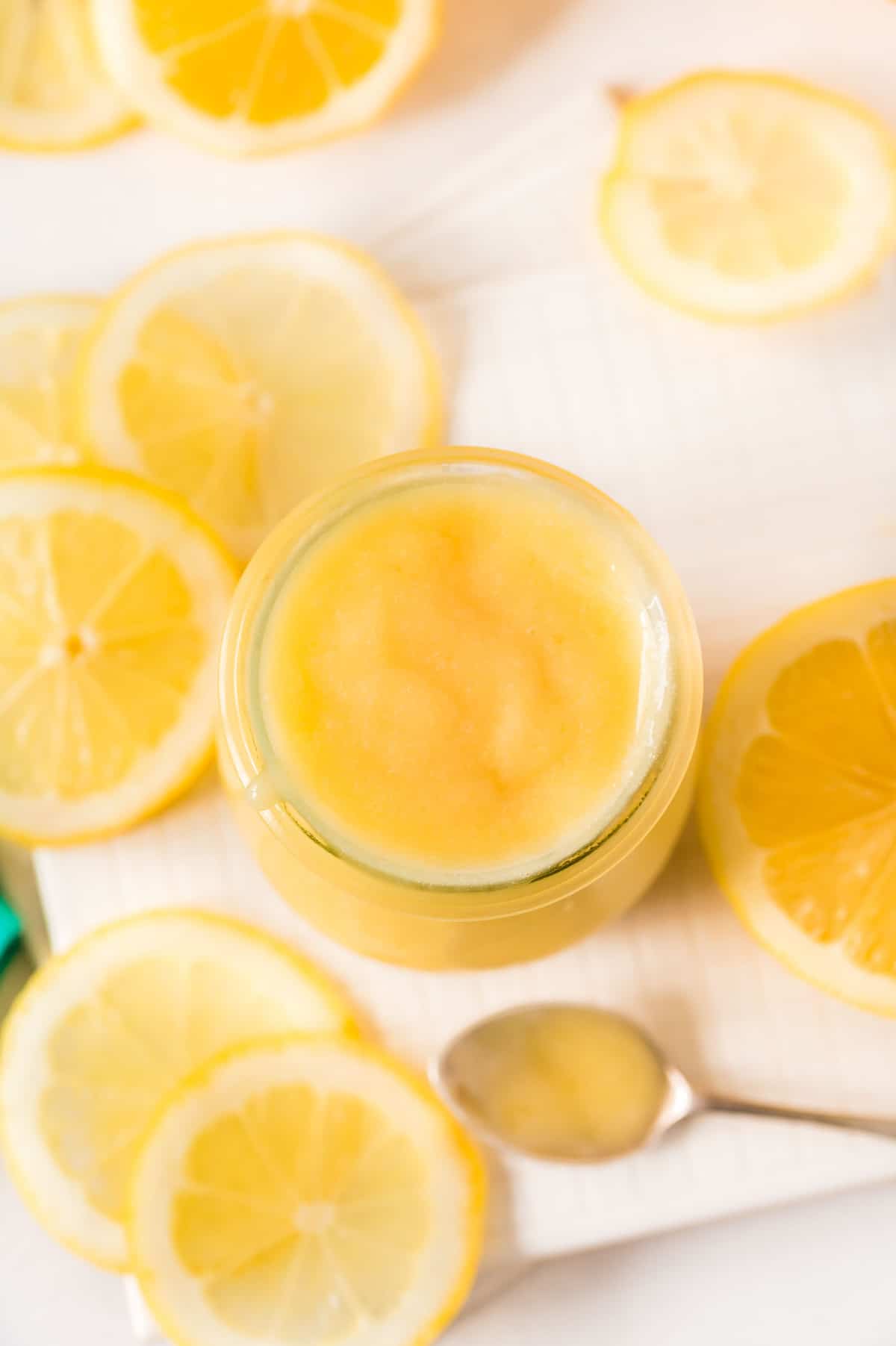
Tips for making easy homemade lemon curd
- Use stainless steel or enameled materials when making curd. Aluminum can cause a metallic aftertaste because it reacts with the lemon. Also, try to use a silicon or plastic whisk and spoon instead of metal.
- Beating your eggs until they are bright and foamy is mainly to get a smooth consistency but also helps achieve that beautiful color.
- Carefully add your eggs in as to not scramble them in the heat and never stop whisking.
- If the mixture gets too hot it can curdle. If this happens, don’t worry, it’s not lost. You can use an immersion blender to blend everything back together. Let come to room temperature and then place it in the fridge.
- Overcooking can cause the curd to become gel-like. This is only a visual problem; the curd will still taste good.
- If you have a double boiler, go ahead and use it. The indirect heat is great when making a curd!
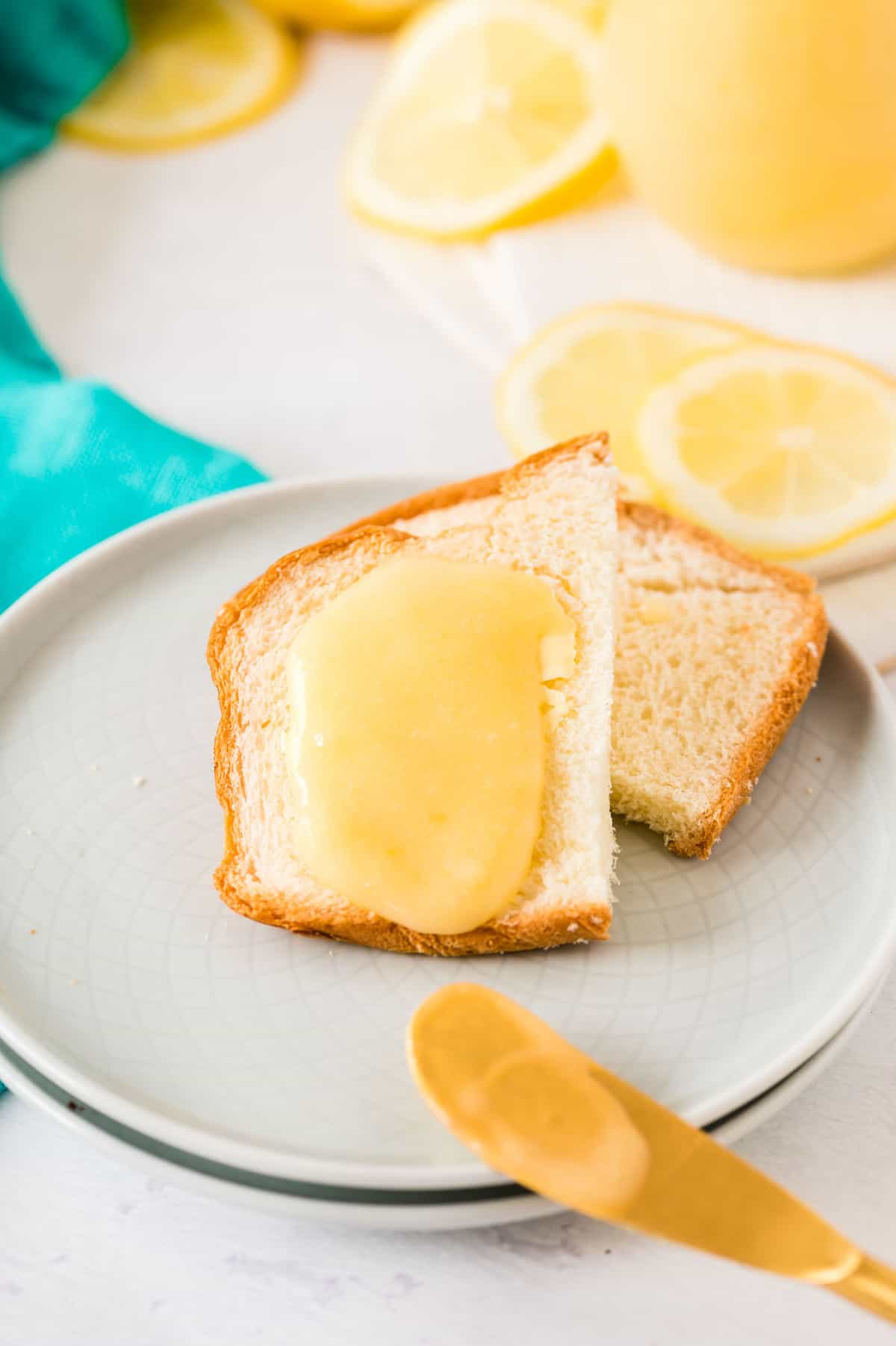
Make Ahead Ideas
The curd will keep in the fridge for up to 1 week, so you’ve got plenty of time to plan ahead. If you want to use it for cakes or other desserts, let it chill so it has the chance to cool down completely, then use it as desired at any point during the week.
Storage Suggestions
Pour into a clean jar or container and keep it stored in the fridge. Lemon curd freezes very well for up to 3 months. Thaw overnight in the fridge just before using it again. Use small containers or ice cube trays to portion it out if you don’t think you’ll use it all at once.
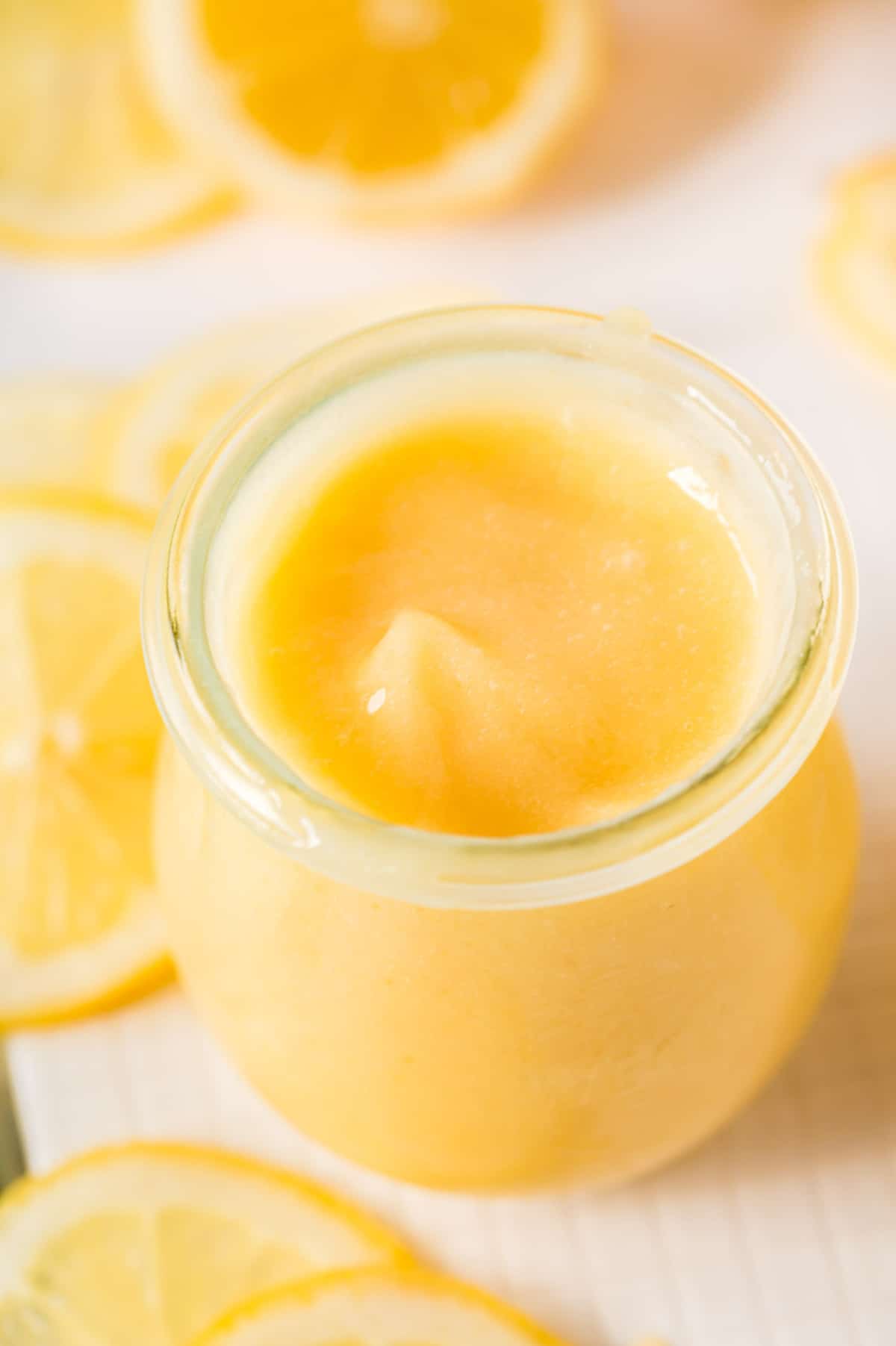
Other sauces and toppings

Get the Recipe: Lemon Curd Recipe
Ingredients
- 4 tablespoons unsalted butter (½ stick)
- 2 large eggs, at room temperature
- 1 cup freshly squeezed lemon juice (about 3-5 lemons, strained to remove pulp and seeds)
- 1 cup granulated sugar
- zest from 2 lemons (zest lemons before squeezing!)
Instructions
- Melt butter in a small pot over low heat (note 1).
- In a mixing bowl, beat the eggs until bright and foamy (note 2).
- Add the lemon juice, sugar and lemon zest to the butter and stir in the beaten eggs while whisking
- Over medium heat, gently heat the mixture while stirring constantly. Don't bring to a boil. If you have a thermometer try to stay between 185°F to 195°F (note 3).
- After about 10 minutes, the curd will start to thicken. Keep on simmering, while stirring, until it has the consistency of a thick sauce.
- Pour into clean containers and let cool. Store in refrigerator for up to one week. It will continue to thicken as it cools.
Notes
- Use stainless steel or enameled materials. Aluminum can cause a metallic aftertaste when it reacts with the lemon. Also try to use a silicon or plastic whisk and spoon instead of metal.
- Beating the eggs until foaming is mainly to get a smooth consistency but also contributes to color. If you just beat the eggs with a fork, you can add it to the mixture through a sieve. The lemon curd will look a bit darker/more orange.
- If the mixture gets too hot it can curdle. If this happens, don’t worry, it’s not lost. You can use an immersion blender to blend everything back together. Let come to room temperature and then place in the fridge.
- Don’t overcook it, it can cause the curd to become gel-like. This is only a visual problem though, it will still taste good.
- Storage: Store in airtight container in the fridge for up to a week. Lemon curd freezes well. Use small containers or ice cube trays to portion it out, if desired.
- Makes about 1 1/2 cups.

